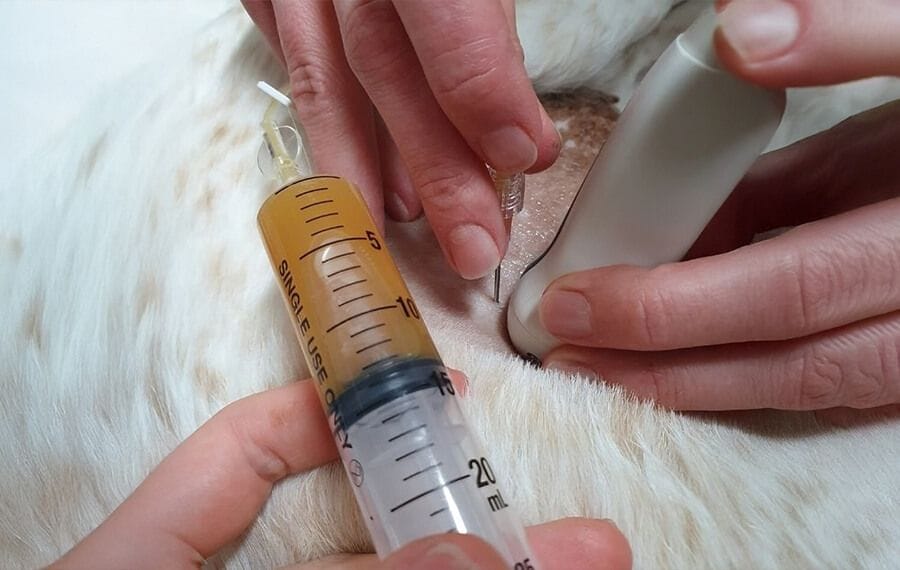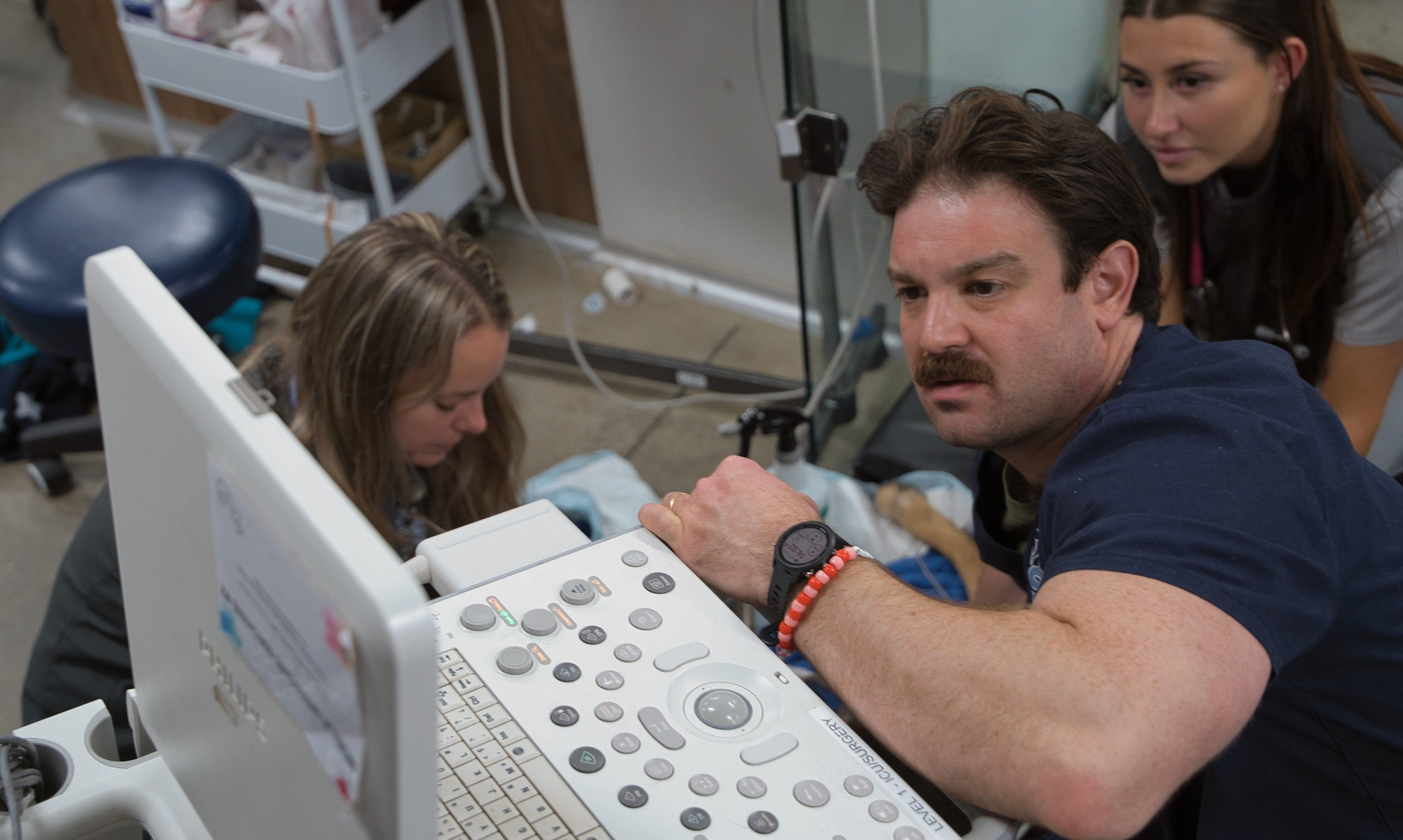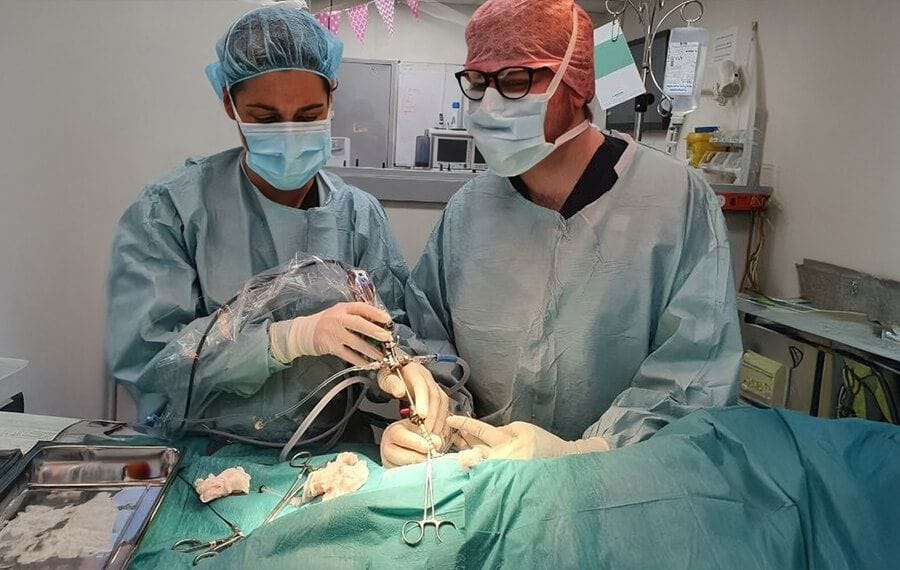When animals are sick, it’s not always enough for a vet to examine them physically.
When there are underlying diseases or conditions that you can’t “see”, or that require further investigation, that’s when we need to use diagnostic imaging.
Mobile diagnostic imaging allows VSOS to come into a local vet practice and perform the necessary imaging to diagnose problems in small animals.
Ultrasound is used extensively in specialist practice for seeing body organs within the abdomen, occasionally the chest, with high clarity and precision.
We can visualise the liver to ensure no masses, lumps or bumps that may explain and elevations in liver blood tests. If a kitten eats a piece of string, our ultrasound is so detailed, it can detect whether the intestinal loops are bunching and becoming tangled. In this case, emergency surgery would be required to save the patients life.
Echocardiography refers to ultrasound of the heart. Pets frequently have an abnormal heart sound called a heart murmur and for accurate diagnosis, an ultrasound is required. Based of those immediate results, a specific treatment plan can be discussed and an idea of prognosis can be given. Young animals born with abnormal hearts can potentially have lifesaving procedures to cure the condition if detected with early with ultrasound. Rarely is sedation required for heart ultrasounds as we prefer to see a normal functioning heart without influence from sedation or anaesthesia.
&geometry(309x90))






